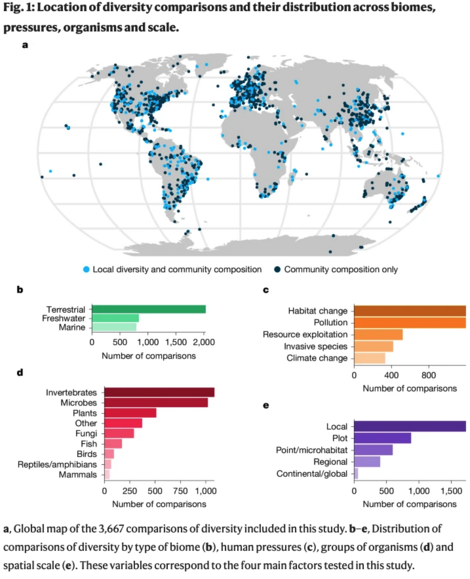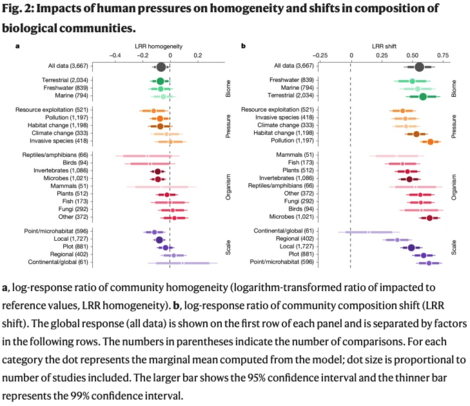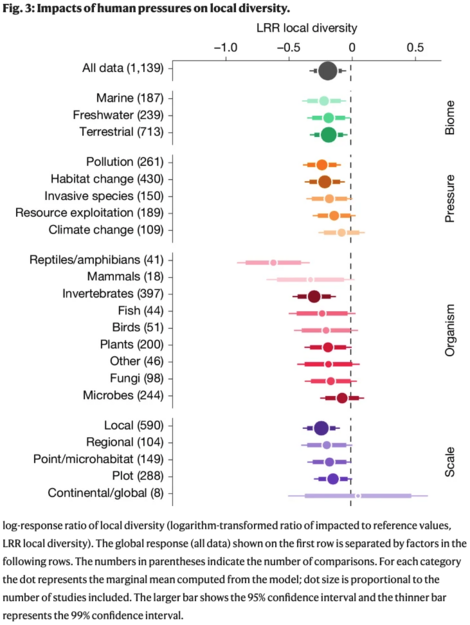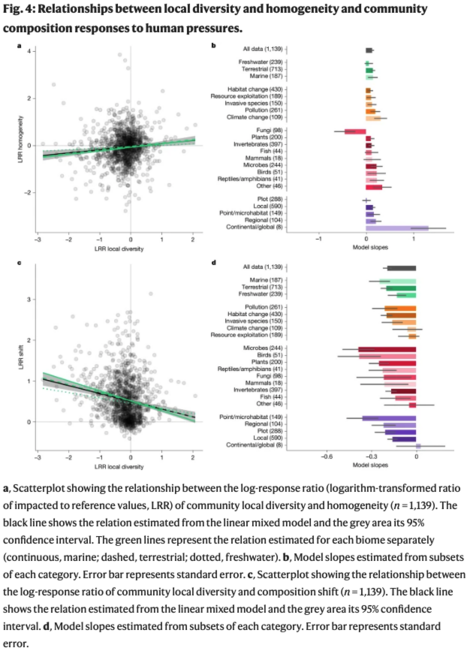A recent study published in the renowned journal "Nature" confirms what researchers and non-experts alike have long suspected: humans are affecting biodiversity on a global scale. But what does that mean? And why has it taken so long to reach this conclusion?
Study report
What it's all about
A team of researchers led by François Keck conducted a comprehensive meta-study analyzing the impact of human activities on biodiversity worldwide. The team examined and compared data sets from more than 2,100 studies with regard to local biodiversity as well as the composition and homogenization of biological communities.
The influence of humans
Five main factors of human influence were identified that significantly affect the composition of biological communities:
- Land use change. Examples: Converting a meadow into a parking lot or clearing a forest for agriculture.
- Resource extraction. Examples: Mines for rare earths, tropical timber extraction, coal mining.
- Environmental pollution. Examples: Landfills, fertilizers in groundwater, particulate matter in the air.
- Climate change. Examples: Extreme events (storms, droughts) tend to increase in frequency, duration, and intensity.
- Invasive species. Examples: Asian hornets are threatening European bee colonies. Canadian goldenrod is displacing native plants.
Homogenization or differentiation?
Contrary to previous assumptions, however, a systematic homogenization of species composition across regions could not be confirmed. Although there is a tendency toward homogenization on large spatial scales, differentiation is often observed on small scales. In addition, a decline in local species diversity has been observed, particularly among mammals and birds. A decline in diversity is accompanied by changes in species communities, with ecological niches being newly occupied or redistributed.
Conclusion
The study provides a new perspective on the global biodiversity crisis. It confirms that human influences have a profound impact, even if they vary greatly. These findings are an important basis for the development of effective conservation strategies and for the evaluation of current measures to preserve biodiversity.
Comment
Why do we need biodiversity?
The term biodiversity describes the range of species in a given ecosystem. This could be a meadow or a river, but also a continent or the Earth as a whole. Anyone who trades stocks knows that a broadly diversified portfolio offers greater security than owning shares in a single company. Similarly, high diversity in ecology also leads to increased stability and resilience of habitats. On the other hand, a system with only a few species or even a monoculture, as is unfortunately still common in agriculture, is much more vulnerable to external disturbances such as disease, extreme weather, or pests.
Is high biodiversity always a good thing?
Even though high species diversity is generally desirable from the perspective of a species that causes drastic ecological changes in a very short time, we should not focus too much on the sheer number of species. A near-natural forest, for example, has significantly less species diversity than a nutrient-poor meadow, yet few would argue that forests are less important than meadows. Among other things, the interaction between species in a community and their mutual dependencies are also of great value to a habitat.
Why are these findings only emerging now?
The Earth system is enormously complex. Even though various parties the assumption that humans influence biodiversity for a long time, it still requires a great collective effort to prove it. Among other things, it is necessary to compare different parts of the world, calculate out disruptive effects, take positive and negative system feedback into account, understand local effects on larger spatial and temporal scales, compare different research methods, and do all this while nature does not stand still but continues to evolve in a highly dynamic way.
Relation to biodynamics
The results of the study clearly show how strongly human influences affect biodiversity. This is where biodynamic agriculture comes in with a holistic approach: it pursues the goal of managing agricultural land in harmony with natural life processes and promoting soil fertility and the diversity of organisms. While industrial agriculture tends to accelerate species loss, biodynamic practices focus on promoting biodiversity within the farming system. This allows them to mitigate local biodiversity loss and contribute to strengthening biological communities. Biodynamic farms can thus serve as a model for sustainable land use that actively counteracts global biodiversity decline.
Sources and further links to this article
- Original study:
Keck, F., Peller, T., Alther, R. et al. The global human impact on biodiversity. Nature 641, 395–400 (2025).
https://doi.org/10.1038/s41586-025-08752-2



